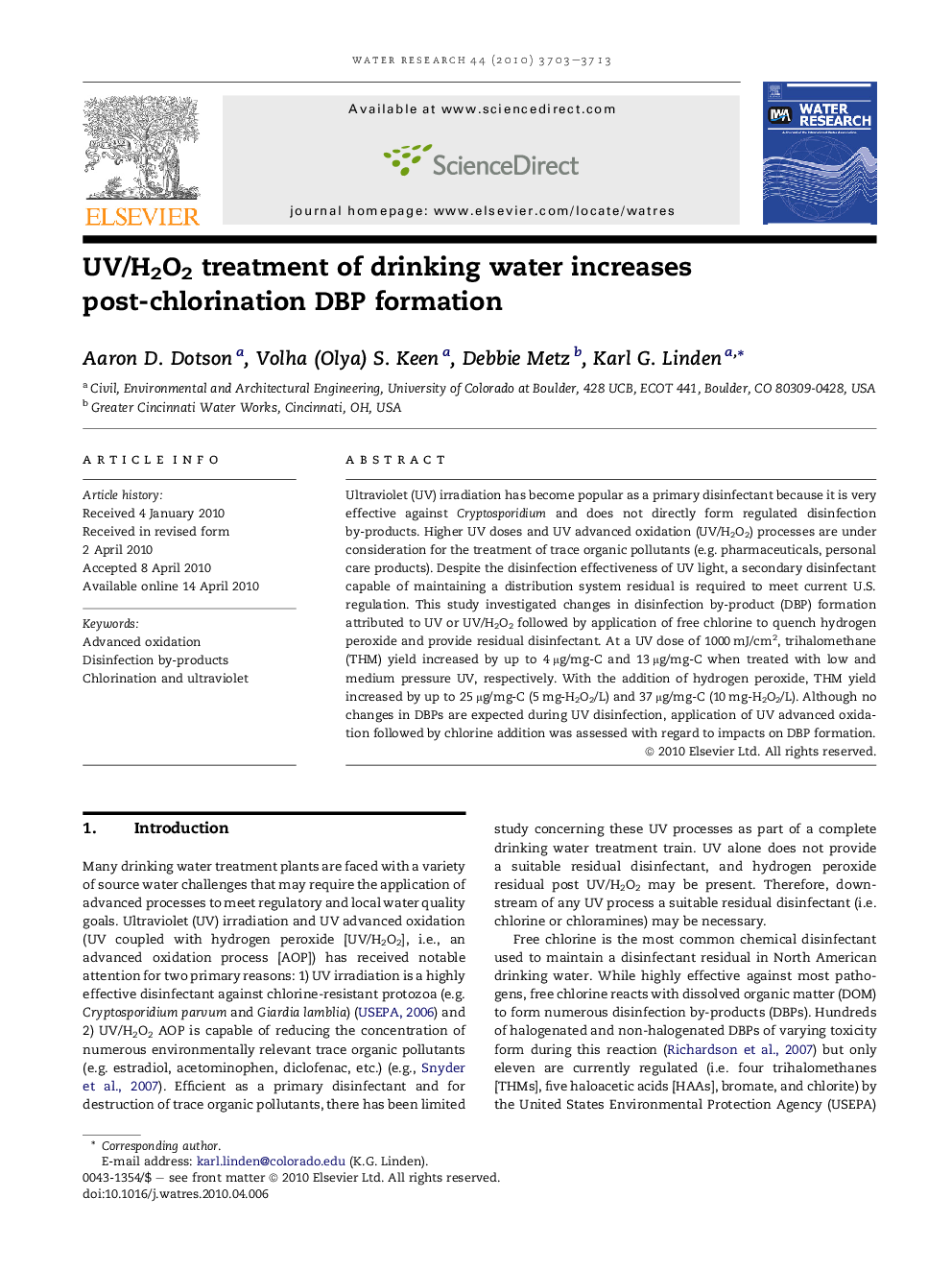| کد مقاله | کد نشریه | سال انتشار | مقاله انگلیسی | نسخه تمام متن |
|---|---|---|---|---|
| 4484069 | 1316908 | 2010 | 11 صفحه PDF | دانلود رایگان |

Ultraviolet (UV) irradiation has become popular as a primary disinfectant because it is very effective against Cryptosporidium and does not directly form regulated disinfection by-products. Higher UV doses and UV advanced oxidation (UV/H2O2) processes are under consideration for the treatment of trace organic pollutants (e.g. pharmaceuticals, personal care products). Despite the disinfection effectiveness of UV light, a secondary disinfectant capable of maintaining a distribution system residual is required to meet current U.S. regulation. This study investigated changes in disinfection by-product (DBP) formation attributed to UV or UV/H2O2 followed by application of free chlorine to quench hydrogen peroxide and provide residual disinfectant. At a UV dose of 1000 mJ/cm2, trihalomethane (THM) yield increased by up to 4 μg/mg-C and 13 μg/mg-C when treated with low and medium pressure UV, respectively. With the addition of hydrogen peroxide, THM yield increased by up to 25 μg/mg-C (5 mg-H2O2/L) and 37 μg/mg-C (10 mg-H2O2/L). Although no changes in DBPs are expected during UV disinfection, application of UV advanced oxidation followed by chlorine addition was assessed with regard to impacts on DBP formation.
Journal: Water Research - Volume 44, Issue 12, June 2010, Pages 3703–3713